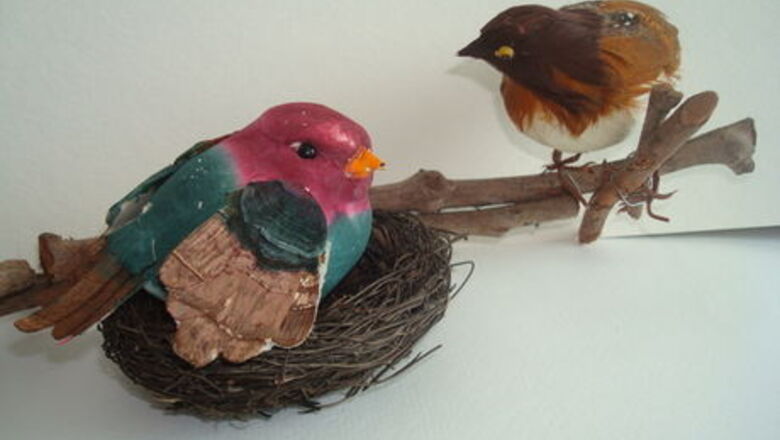
views
Planning and Preparing
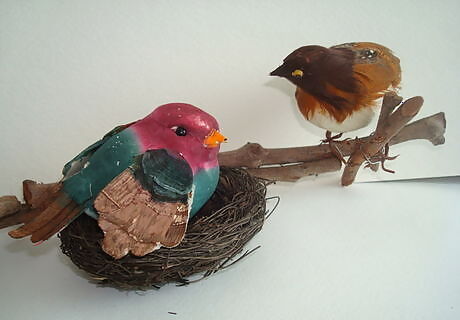
Gather supplies. A piece of 11" X 14" watercolor paper, a pencil, eraser, watercolors, a variety of brushes, a water bucket, a support board, masking tape, masking fluid and pictures of birds.
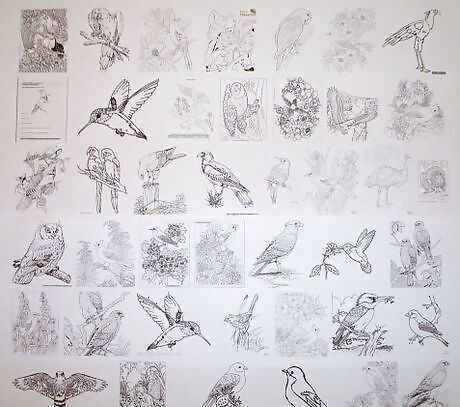
Find pictures of branches with spring buds and flowers. Go to the internet for pictures. Google: "realistic bird coloring pages" for clear line drawings. Birding magazines, bird watching guidebooks and gardening catalogs are all places to look for inspiration and guidance.
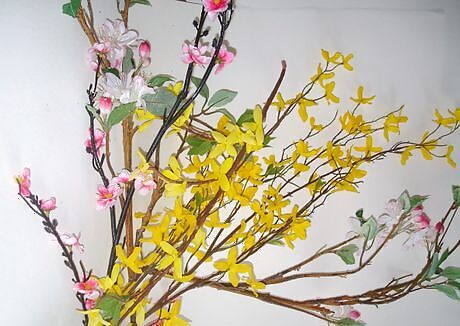
Buy a replicated branch at the craft store. They are quite realistic and come bearing blossoms in many varieties; apple, cherry, forsythia, and dogwood. Pussy willow is a spring mainstay, and will last forever.
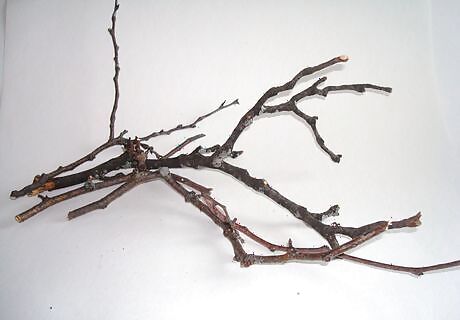
Go outside and cut a branch from an actual tree. Look at the real thing, see those little details provided by nature, tiny minutiae and peculiarities. These branches will add a sense of realism to your drawn and painted ones.
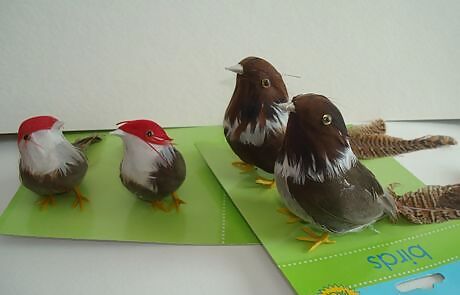
Get inspiration for the birds. For the birds, art and craft shops have realistic looking, life-sized ones. Some have wired feet so you can attach and pose them on a branch. Pictures of birds, either ones you have taken yourself or pulled from magazines will work, too.
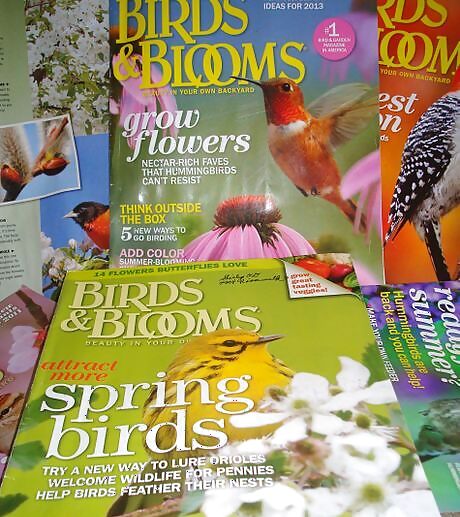
Decide early what you want your art piece to say. Thumb through birding magazines and studying the myriad photos others have taken will give you lots of ideas. Looking out your own windows will be helpful, too. Begin to narrow your scope. Start creating a mental image of what you want your own art work to look like.
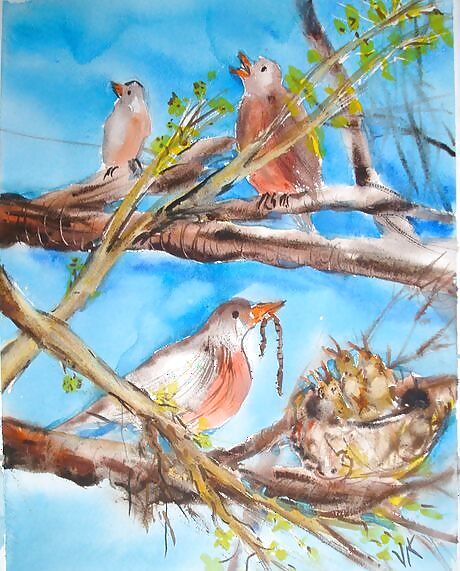
Consider your composition. Composition will be easy if you allow the diagonal lines of the dark branches to be prominent. This will give your composition stability and directional excitement. Another composition is to frame the entire picture plane with leaves and branches. Working the entire four edges of the paper with foliage will draw the viewer's eye inward to your center of interest, the bird.
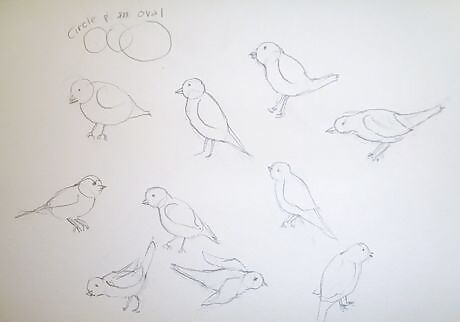
Practice drawing a simple bird shape. Google: "How to draw a bird" for ideas. Think of two basic shapes; an oval for the body and a circle for the head.
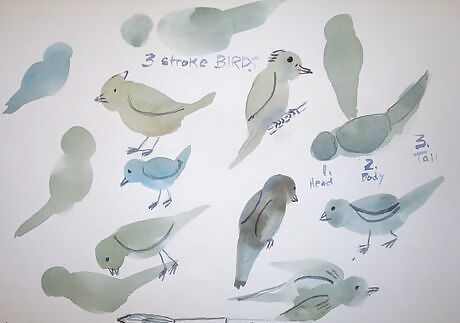
Practice painting birds first. Try doing a bird with a few brush strokes. This will give you a fresh, lively looking bird. Do a lot of birds in this style of painting on a piece of scrap watercolor paper. Try various poses.
Decide how you want the sky to look. The choices are endless; bright and sunny, stormy, bleak and winter, rainy, a solid color, etc.
Sketching and Painting
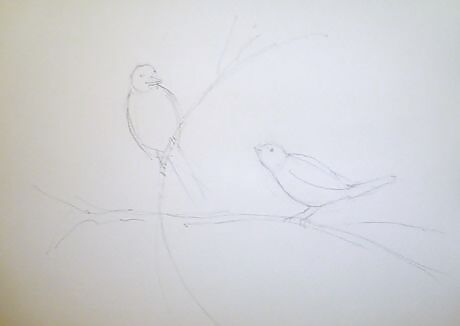
Sketch your bird on the watercolor paper. Do this lightly in pencil. Make the bird at least life size. Since he is on a branch, Indicate where it will go.
Begin painting at any point on the paper. It is entirely your choice.
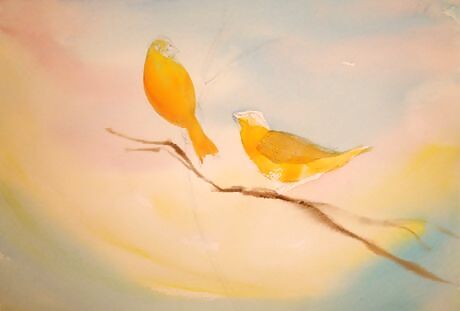
Do the background first if you wish. Paint around the bird.
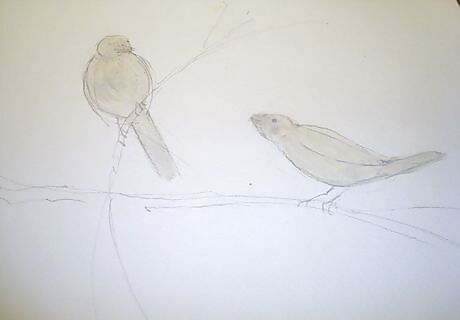
Use masking fluid to preserve the white paper where the bird will be. Masking is a rubberized coating, that allows you can to paint right over an area, such as the bird, to get a unified background. After the piece is dry, you can unmask by rubbing with your finger or an eraser, and paint the bird at your leisure, knowing that the background is taken care of.
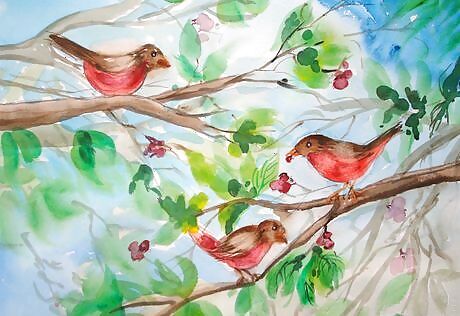
Include foliage. Leaves, buds and fully opened blossoms are all things you might want to put in your picture. If the leaves are just unfurling they will appear curled. The colors of spring might be more yellow green than the deep, rich, verdant greens of summer. This pastel green will contrast nicely with the dark branches.Do distant branches in gray or pale blue to have them appear to recede.
Try working wet-into-wet. To do this, first mount your paper securely on all four sides to the support board with masking tape. This will keep the paper flat as your work.
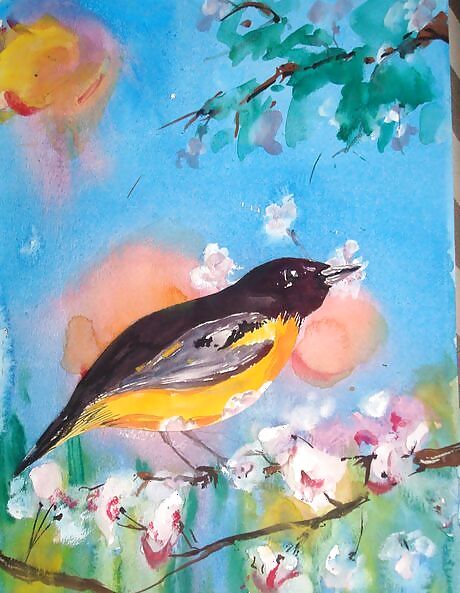
Try a different way to achieve depth in your piece. Do the entire page as background, branches, etc. everything but the bird. Paint right over where the bird will eventually be sitting. On a small piece of watercolor paper, do a bird. Sketch and paint it. Cut the bird out and adhere it over the background using sticky foam dots. The thickness of the dots will make the bird stand out slightly and give a spatial dimension to the piece.
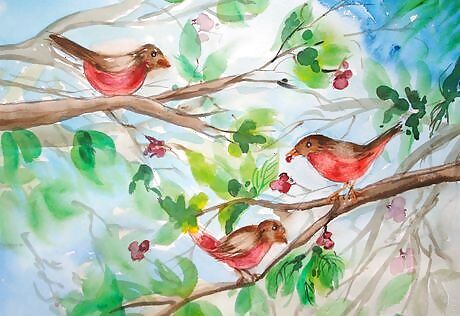
Open your eyes to nature all around you. It's free and yours for the taking. Appreciating such a vast gift is good, but making a piece of art inspired by nature elevates your experience and makes it unique and unforgettable.




















Comments
0 comment